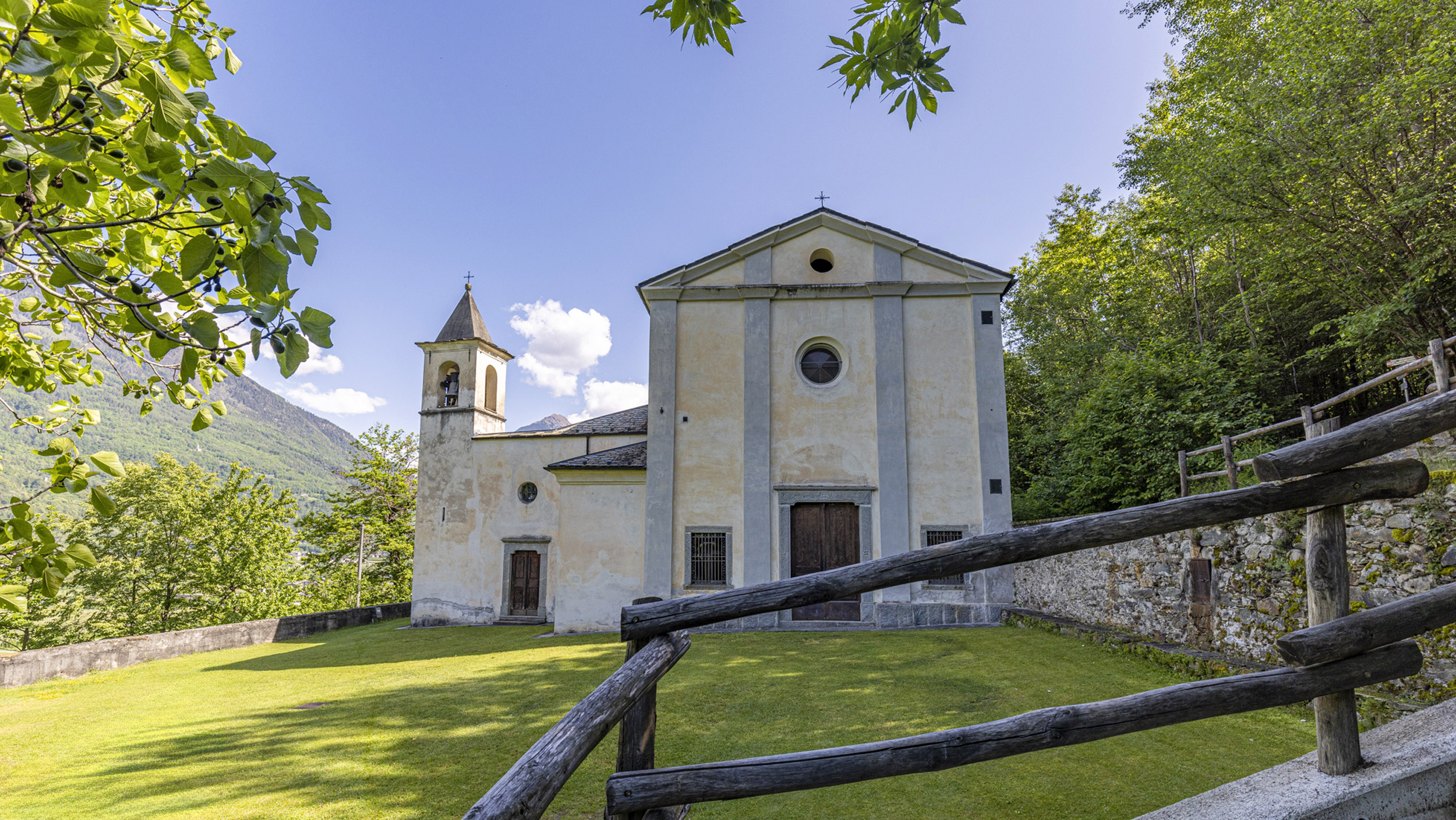Via Prestino 23030 Tovo Sant'Agata (SO)
Both slopes in this part of the valley are blanketed with lush vegetation, concealing even the most representative historical buildings, such as churches and fortifications.
The castle of Bellaguarda was built in the 13th century to ensure control of the area to the Venosta family, nobles from Pieve di Mazzo, but the main tower and walls with their characteristic fan-like layout are now under constant pressure from the encroaching forest.
Slightly lower on the slope, the same fate has befallen the picturesque “holy enclosure of Tovo”. The complex is composed of two churches built in different periods and a manse for the priests. The entire area, including the parvis and old cemetery, is enclosed in walls, creating a space exclusively used for religious purposes. The older church is the one lower on the slope with its bell tower aligned with the façade. Built in the Middle Ages, it was initially dedicated solely to Saint Cassian and only later also to Saint Hippolytus.
The church is relatively small and so a wooden loggia, accessible via an external stairway, was added in the 17th century. The apse was frescoed in 1560 by the preeminent Valtellina painter of the time, Cipriano Valorso of Grosio, who signed and dated the cycle above the window and at the center of the intrados. The curved wall bears the scene of the Pentecost: the Holy Spirit appears in rays of light from above that bathe the apostles sitting around Mary. The sections of the vault are decorated with lovely Musical Angels.
A beautiful wrought-iron chancel screen separates the space reserved for the clergy from the nave. The star-shaped decorations and spearhead tops of the vertical bars date it to the 16th century.
The early oratory was not dedicated to the Virgin, but its right side was adorned with a large Renaissance fresco with two saints and an Enthroned Virgin and Child, affectionately referred to as the “Madonnina”.
The holy figures were originally protected by a simple roof, but this was replaced in the late 17th century by chapels with a portico supported on stone columns. The faithful were thus afforded shelter in a space enclosed only by railings, allowing worship while valorizing the frescoes.
In 1893 the decision was made to build a new church in place of the portico. It was dedicated to Our Lady of Caravaggio, an apparition of the Virgin Mary in Caravaggio on May 26, 1432, a day in the liturgical calendar dedicated to Saint Cassian. And so the new was added to the preexisting, incorporating the 17th-century chapels while adding a few modern touches in the design of the altars, the wood statue group of the Apparition of Our Lady of Caravaggio to the Seer Giovannetta (1898), and in the painting by Torildo Conconi (1938) that represents the local devotion to Saints Roch and Mark in the second chapel.







